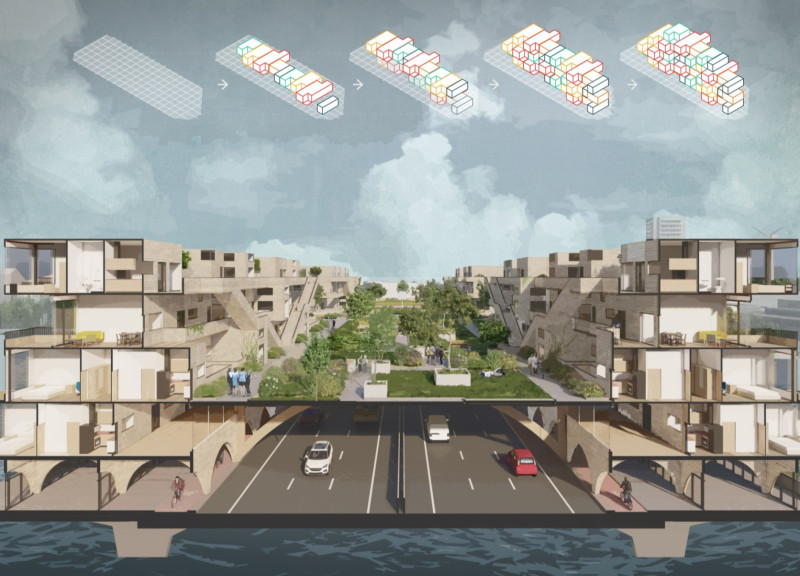5 key facts about this project
The NEXUS project in Berlin addresses the significant needs of a growing urban population while managing limited land available for housing. With more than half of the city's area dedicated to residential uses and over 15% to traffic, the project looks to reclaim underused areas for vibrant green spaces alongside affordable living options. The design concept prioritizes connectivity, linking housing with public spaces to enhance community interaction and improve environmental conditions.
Concept and Connectivity
The design focuses on creating links across the city, bridging different urban areas. Relocating traffic underground reduces noise and pollution, creating a more pleasant environment for pedestrians. This change frees up space on the surface, which can be used for walking paths and greenery.
Green Integration
Enhancing green spaces is a central aspect of the project. The design incorporates parks and pedestrian pathways that connect staggered housing blocks. These public spaces are inviting and promote social interaction among the community. They create a balance between natural surroundings and the built environment, making the urban setting more enjoyable.
Housing Typology
Housing in NEXUS is designed to be affordable and prefabricated, which helps meet the urgent demand for homes in Berlin. These buildings are adaptable to various site conditions, making them practical for the changing needs of the city. The layout encourages neighborly interactions while providing spaces for privacy.
Commercial Integration
Ground-level areas are intended for vending and commercial activities, supporting local business and providing essential services for residents. This arrangement makes amenities easily accessible and contributes to a lively urban atmosphere. The integration of shops and services within residential blocks creates a convenient living experience for those who call this area home.
The NEXUS project includes parks with winding pathways and gathering spaces, inviting residents to explore their surroundings. These elements foster a sense of community while offering a necessary retreat from the urban hustle.



















































